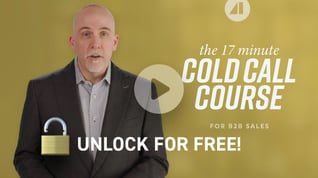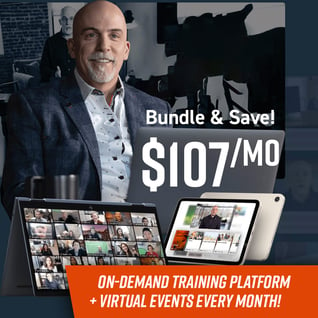Winning in chess—or sales—starts with one critical move: a strategic opening.
In the seventh grade, I learned to play chess. When I got to high school, I came across a book called Bobby Fischer Teaches Chess, and decided to study it. It was unusual. It gave you a chess puzzle to solve. To see how you did, you had to turn the book upside down to read Fischer’s notes and recommended strategy. I played all summer and got better and better, beating my freshman peers easily. The seniors, however, were able to beat any and all freshmen. They had far more experience than we did. The extra few years of practice made a big difference, but at this point in my life, winning takes more than experience. It takes skill, strategy, and focus.
I still play chess. Last night, I moved both rooks and my queen to checkmate my opponent, but it wasn’t that final move that caused me to win. It was foresight, planning, and a strategic opening.
Recently, my chess obsession has started up again, and I’m finding all kinds of strategies that I haven’t seen before. When playing against a skilled opponent, you don’t get to checkmate with a winning move. You need a winning strategy. Experienced players don’t make many mistakes, so your plan can’t be to catch them in a bad move. To win, you need a strategy, which starts with your opening move. One of the most important things you need to get right in chess is the opening. If you don’t get your opening right, you get a bad start, making it hard to recover. If you take care of the opening, you increase your ability to make a plan and execute it.
A strategic opening sets your course for the rest of the match. It allows you to play on your own terms instead of reacting to what your opponent does. It gives you control and helps you stay calm and confident. A good strategy helps you determine where you go and what you do, helping you understand the best next move.
Sales is no different. No matter how long you have been selling, you will always be responsible for getting a great start by using a well-developed opening. Your strategy is interlinked with how you open a conversation with a client. If you fail to prepare a strong opening, you will not be able to execute your strategy. You must tailor your opening to your strategic approach.
For a long time, salespeople believed the best opening included an overview of your company and its clients. This was an attempt to build trust with the client, who would be impressed by the company’s history. From there, the sales rep shared a slide with the company’s largest and prestigious logos, followed with a conversation about their solution. We call this the “why us” conversation.
Instead of “why us,” some sales professionals cling to rapport, trying to get their contacts comfortable and develop a friendly connection. When you ask a decision-maker for their time, then open the sales conversation with irrelevant fluff, your contact feels that you are wasting their precious time.
Still others wing it and hope and pray they are able to win the client’s relationship and their business.
In the third decade of the 21st century, it is important to use a strategic opening. For a very long time, I have practiced an opening that sets up an effective conversation. Allow me to give you a rundown on four elements of a great opening.
1. Executive Briefing Sales Strategy for B2B Meetings
When you show up in your client’s facilities, you will do well by sharing insights about key trends that likely cause your client to struggle to produce the result they need to succeed. This is designed to establish the question “why change?” An executive briefing helps you answer that.
You can prove yourself to be a valuable consultant and advisor by citing your findings with relevant and authoritative data. Keep a list of your sources to demonstrate that you’ve done your research and prepared something that is really useful.
When you use the executive briefing, you should ask your client how these trends and others are showing up in their world, which will get them talking.
2. How to Research a Sales Prospect’s Company and Industry Before the First Call
It is imperative that you do your research on the company, their industry, and the contacts that will take part in any conversation about a significant change to their business. This is the best way to establish yourself as an expert and also focus on what will seem most relevant to your contacts. Your clients will be pleased that you did your homework. When you can prove you understand the client’s problems and their root causes, you make a convincing argument that you can advise them on the right decision.
3. Sales Confidence Tips: Proving You Belong in High-Stakes Meetings
Some of you know that I believe that sales reps should be One-Up, meaning sales reps should know more than their client about the client’s future decision. The opposite of being One-Up is being One-Down. One-Down salespeople do not have much knowledge about a prospective client’s situation. They are unable to provide information and insights that can create value for their contacts. This affects confidence in the sales conversation. One-Down salespeople lack confidence and fail to gain their contacts' confidence. When a salesperson asks a client what keeps them up at night, they might as well be asking, “Why am I here?”
One-Up salespeople demonstrate confidence because they know what they are talking about. They don’t waste time asking questions to uncover the client’s problem. Instead, they open by sharing useful insights with their contacts, helping them gain their contacts’ confidence and trust. People buy from people whom they trust more than they trust themselves.
To be truly confident, don’t go into a meeting and ask questions you should already know the answer to. Go in and say something important.
4. How to Secure a Second Sales Meeting with Strong Discovery and Openings
Having accomplished these important opening elements, you should have little trouble securing a second meeting. If your client has extra time and stays with you, that would be a good time for rapport building, as you have proven that you are not a time-waster.
Approach your next meeting like a chess master. Focus on how your opening can set up the sales conversation so you emerge as the best salesperson to help your client make a strategic change to succeed in their current environment.












